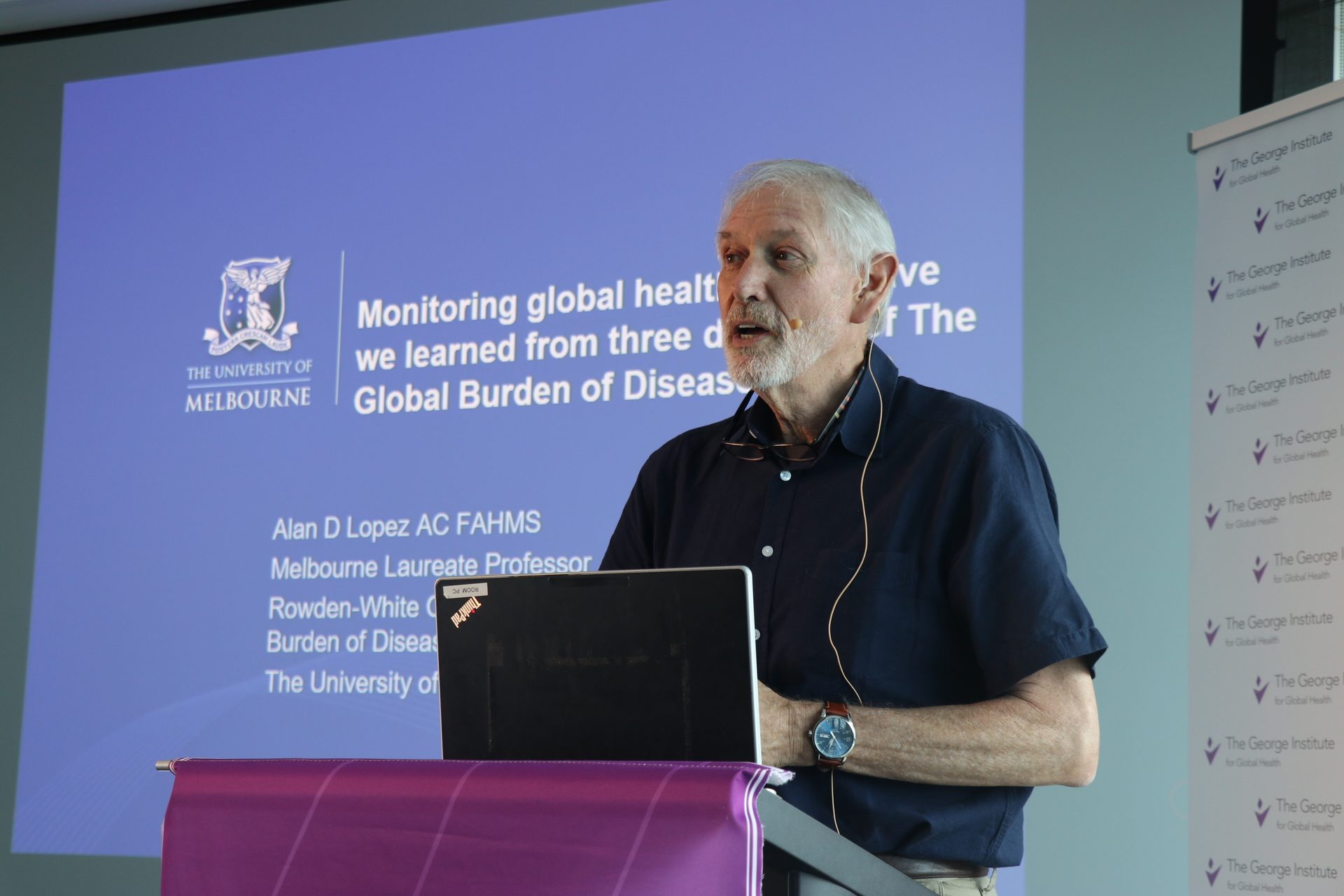
30 years of the Global Burden of Disease Study with Professor Alan Lopez
The George Institute for Global Health was fortunate to host one of the founding fathers of the Global Burden of Disease Study (GBD), Professor Alan Lopez from the University of Melbourne on the 29th of January. He talked about the history of the GBD, why it was needed and what we have learnt from it over the past 30 years.
The Global Burden of Disease Study (GBD) is the most comprehensive worldwide observational epidemiological study to date. It describes mortality and morbidity from major diseases, injuries and risk factors to health at global, national and regional levels. The GBD examines trends from 1990 to the present and makes comparisons across populations to better understand the changing health challenges facing people across the world in the 21st century.
It represents a systematic scientific effort to measure the comparative magnitude of ‘health loss’ due to major diseases, injuries and risk factors by age, sex, country. Health loss includes both premature mortality and disability. It does not include loss of welfare or other externalities associated with disease and injury (e.g. family care implications of injury).
Key take-outs from Professor Lopez’s presentation are below.
Five overarching messages to emerge from the GBD Study
- Demographic transition is shifting disease burden from children to young adults.
- Disease transition is leading to a larger proportion of deaths from non-communicable diseases.
- Disability transition is shifting the burden of disease to conditions that cause disability but not substantial mortality.
- Risk transition is shifting the major risk factors from those of poverty to lifestyle risks.
- The leading health problems in sub Saharan Africa remain those related to the Millennium Development Goals 4, 5 and 6.
Key messages for population health policies from the GBD Study
- Rapid and sustained progress in reducing child mortality over 50 years will mean greater numbers surviving to middle and (eventually) old age. Further declines are likely.
- Risks of most major NCDs are declining, but progress is slower in some populations as major risk factor epidemics unfold.
- Urgent need to promote policies and programs aimed at avoiding premature deaths for adults, especially from road traffic accidents, suicide, cancers, ischaemic heart disease, cirrhosis – supplementing HIV/TB/malaria – no longer ‘either/or’, but both.
- Tobacco, obesity, diet, alcohol and blood pressure control are vastly underappreciated as major global causes of health loss; likely to lead to increasing NCD disease risks in developing countries.
- Continued life expectancy gains probable everywhere but likely to be accompanied by increased periods of chronic disability.
In 30 years of the GBD, what have we learned?
- There is an enormous global appetite for reliable, local, detailed, timely, periodic and trust-worthy assessments of the leading causes of health loss in populations, and information on how these are changing.
- What started out as a bold, but largely academic effort to quantify the global burden of disease 30 years ago has become a vastly more comprehensive, inclusive and dynamic enterprise, providing essential health intelligence to countries and influential and committed global health actors.
- This is probably the largest global collaboration in health research and measurement, and it must continue, but we can do better, particularly by overcoming challenges around data sharing, data gaps and data quality.
- There is a vast and unacceptable uncertainty around cause of death and risk factor estimates, and how they are changing, with missing or poor-quality data for 2 in 3 deaths worldwide. We know what to do, but there is insufficient push and leadership among global health communities for better data.

